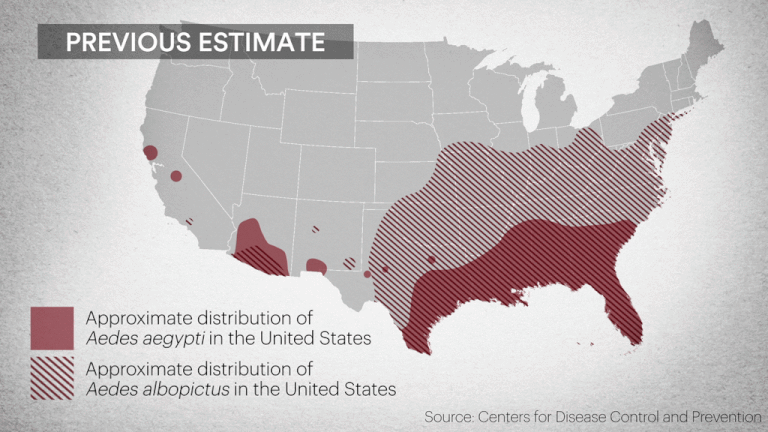CLIMATE CHANGE IS FUELING DISEASE OUTBREAKS IN AFRICA'S SAHEL REGION
Africa's Sahel Region is Experiencing up to 7.2°F (4°C) Hotter Temperatures on Average, Leading to a Rising Threat of Neglected Tropical Diseases (NTDs)
By: Sigrid Vestergaard Frandsen, Director of Environmental Health
Driving around N'Djamena, the capital city of Chad, dust swirls all around our car. The dry soil has cracked under the scorching sun, while the locals take refuge with their zebu cattle in the shade of the few acacia trees that are left. Those very trees stand like fragile survivors with roots stretching into soil that holds less water each year.
We are on our way to a local water source to see how the water is treated to make it safe to use and drink. The stagnant water hole shimmers under the sun, deceptively inviting. Yet it hides dangers carried by parasites and disease-carrying vectors. Treating the scarce water sources that are available to the locals is crucial to keeping neglected tropical diseases (NTDs) at a minimum and, ultimately, eradicating them. One of these NTDs is the Guinea Worm Disease.

Global heating trends are challenging to the final steps in the eradication of the Guinea Worm Disease as it changes water availability, reduces the number of water sources and makes them more stagnant. Unfortunately, the parasite's intermediate host, the copepod, thrives in stagnant water.
In recent decades, community and internationally-based efforts and interventions to provide safe drinking water have reduced human cases significantly. Yet, changes in climate patterns – such as extreme rainfall events and increasing droughts – also affect human behaviour, forcing people to use unsafe water sources and therefore increasing the risk of infection. Additionally, factors such as animal infections, cross-border movements, and the unpredictable effects of climate change on water sources are now the main obstacles to achieving complete eradication of many NTDs.

A Guinea Worm being wrapped around a stick. A method used to extract the worm from the leg vein of a human patient. Source: CDC, Centers for Disease Control and Prevention
One NGO facing these challenges is The Carter Center. They started the fight against Guinea Worm Disease in 1986 when the disease afflicted an estimated 3.5 million people a year across 21 countries in Africa and Asia. In 2024, the number of human cases fell to an extraordinary15. But the countdown to zero is only getting more and more challenging as our world is heating radically.
Other disease-carrying vectors, like mosquitoes, ticks and snails expand their geographical range as a result of climate change, leading to increased transmissions. In fact, between 2003 and 2023, more than 1 million cases of vector-borne diseases were reported in the United States alone as a result of this, according to the CDC. The extreme changes in climate patterns have boosted mosquito and tick populations and made it easier for them to spread harmful pathogens to people. Ultimately, diseases like Lyme and West Nile virus are increasing in the US.

Map showing the expansion of two types of mosquito populations in the US: The Aedes Aegypti carrying yellow fever and the Aedes Albopictus carrying dengue, zika and Chikungunya. Source: CDC, Centers for Disease Control and Prevention
Recent data shows that temperatures in the Sahel and Sahara regions of North Africa have risen with 7.2°F (4°C) and even 10.8°F (6°C) in certain areas – including the Arabian Peninsula – in the last 150 years. According to the World Economic Forum, one-third of the world's population could be living in conditions that are outside humanity’s comfort zone by 2070 – that's 3 billion people.
NTDs are more prevalent among people who live in poverty without access to clean water, adequate sanitation and quality health care. Additionally, most NTDs are chronic conditions and are often disablers rather than killers, leaving behind a trail of social consequences. Ultimately, with the advance of climate change and a massive funding cut in foreign aid, NTDs worldwide now face even more neglect than ever before.

Temperature anomaly map of Africa, showing the hot season (April-June) in 2024, the hottest year on record in Chad with 5-6°C above the norm. Source: Climate ReAnalyzer, Climate Change Institute, University of Maine.
The fight against neglected tropical diseases in the Sahel stands at a crossroads. Remarkable progress has been made, yet global heating trends is unravelling decades of effort. Rapidly rising temperatures, extreme rainfall events and shrinking water sources are not only intensifying the spread of old diseases, but also creating new pathways for transmission. To safeguard vulnerable communities, eradication campaigns must now adapt to a rapidly changing climate — integrating stronger water management, long-term resilience strategies and cross-border collaboration, now that international funding has been cut drastically. Without urgent action, it will be harder and harder to reverse in the future.
At the Daniels Family Sustainable Energy Foundation we believe that no one should suffer simply because the world is getting hotter. Our work develops simple, scalable solutions to reduce heat stress and energy demand — because resilience starts with the ability to stay cool, healthy and productive. The challenges in the Sahel may be distant, but the solutions we build today can help shape a safer, more livable future — everywhere.

